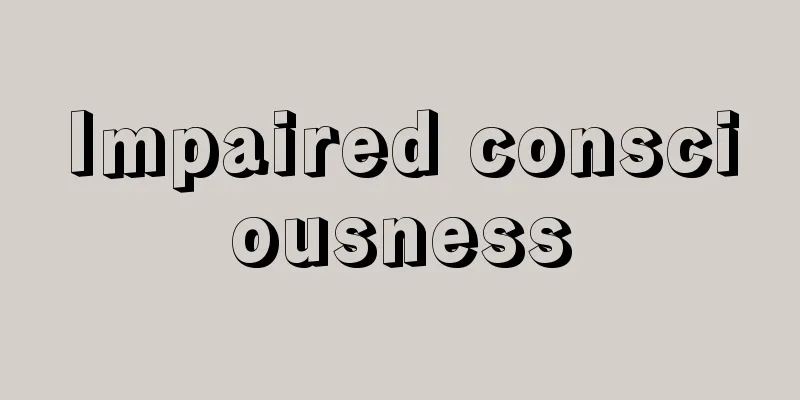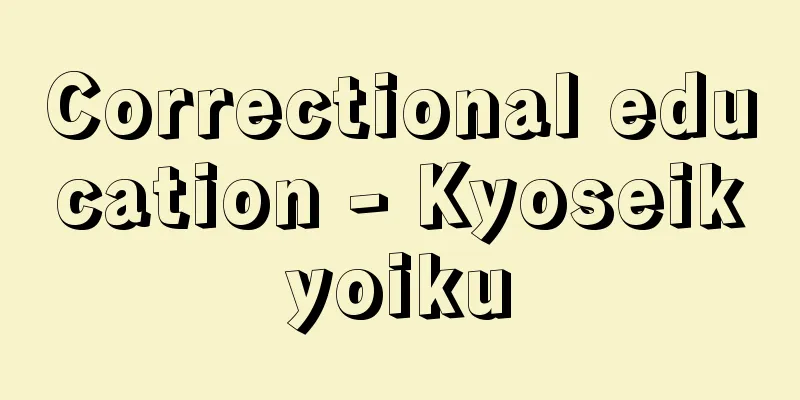Ethnic music - Minzokuongaku (English spelling)

|
Folk music can be interpreted literally as "music that has been passed down uniquely by the various peoples of the world," but the term has been used in a variety of ways. (1) The most classic definition is "music other than Western classical and popular music." Originally, ethnic means "of a different race or religion," so the term ethnic music here implies "exotic and barbaric music of a different race or religion (as opposed to developed European music)." While this discriminatory view of music has been rejected in recent years, there are also those who argue that the term should be used to refer to "music other than Western classical and popular music" without making such value judgments, and this is actually quite common. However, this does not change the Eurocentric position of lumping together and contrasting music from other regions with Western music, so there has been a noticeable tendency recently to avoid using the term in this way as much as possible. (2) Furthermore, the concept of (1) was imported and Japanized into Japan, and the term "ethnic music" is now commonly used in modern Japan to mean "music other than Western classical music, popular music, and Japanese classical music (so-called Hogaku) and popular music." However, the same criticism as in (1) also applies here, and there are problems with using this term too easily. (3) Based on this reflection, there has been a noticeable movement to free musical classification from Eurocentrism and to reject the definition of music by specific genres. In this position, the term "ethnic music of XX" is used to refer to specific peoples, regions, or countries. In this case, all music performed in that place (and in some cases imported music) is included. For example, "Japanese folk music" refers to all music, from classical music such as gagaku and early modern Japanese music, to folk songs and folk performing arts, and even popular songs and music, and Western classical music composed and performed by Japanese people. This usage has been gaining considerable support in recent years. (4) However, if we take the idea of (3) further, all music is included in the concept, so there is no need to use the term "ethnic music" and it is argued that simply calling it "music" would be sufficient. This is, so to speak, a denial of the term "ethnic music," and has been gaining support in recent years. (5) However, even if we fully accept the argument in (4), we can point out the reality that when we say "music," only certain genres or music from certain regions are still brought to mind, and this is where an eclectic approach to (3) and (4) emerges. In other words, until the time comes when the word "music" can refer to all music that is performed in a certain place, we insist on provisionally using the term "ethnic music" in the specific way described in (3), with the implication that it also evokes types of music that have not been well known up until now. In this way, the concept of ethnic music will continue to serve as a warning against a biased view of music. In this article, we will use the term "ethnic music" from the standpoint of (5), since the position of (4) against ethnic music is gradually being accepted. Next, let me briefly explain a somewhat unusual usage. In Russia, China, Korea and other countries, the traditional music of one's country (or ethnic group) or newly created music based on that is called folk music. In addition, in recent years, a more popular usage is "ethnic music" rather than "folk music." The meaning is not very clear, and it simply means music that gives an exotic feeling. There is nothing bad in itself about enjoying exotic music in daily life, just as casually as enjoying ethnic costumes and ethnic cuisine. However, the emphasis on exotic means that in a sense it is approaching the classical usage of (1), so care should be taken. Incidentally, there is a word very similar to "ethnic music" called "folk music." This is used in a somewhat discriminatory sense to refer to the music of the lower classes in a hierarchical society, as opposed to the music of the upper classes, which is considered "art music." Therefore, even if what is called folk music overlaps in part with ethnic music, the concepts are quite different, and it is necessary to avoid confusing the two. [Ryuichi Tai] Aspects of folk musicHere, we will present the diversity of the world's various folk musics by taking an overview based on their internal structures and external conditions. [Ryuichi Tai] Musical Structure(1) Pitch (sound structure) The number of notes used is relatively small among Pygmies and Australian aborigines, but large in Iranian-Persian music. However, this does not mean that the music is superior or inferior. The range of notes is also relatively wide in East Asia, but narrow in Oceania. Furthermore, low ranges are often used by Tibetans and Don Cossacks, while high ranges are preferred in the Andes and the Amami Islands. With regard to tuning, while equal temperament is generally used in Europe, minute intervals are prominent in various parts of Asia (especially Western Asia), and there is theoretical support for this. (2) Rhythm (temporal idiom) In Western Asia, free rhythm is important (especially in instrumental and vocal improvisation), whereas in Western Europe, fixed rhythms in duple or triple beats are common. In East Asia, divided rhythms are common, while in Eastern European dances, additional rhythms such as 5/8 (2+3) or 7/8 (2+2+3) are seen. In Africa and the Caribbean, syncopation is used frequently, and hemiola rhythms, in which rhythmic structures are stacked, are also common. There are also diverse aspects regarding tempo. For example, the tempo is fixed in South Indian classical music and African music, while in North Indian classical music and Korean instrumental forms, the tempo gradually accelerates. (3) Dynamics: In Japanese jiuta and sankyoku ensembles, the range of dynamics is relatively narrow, whereas in Myanmar and Indonesian ensemble music, the range of dynamics is wider, and there is a contrast between soft and loud notes. (4) Tone First, let us look at vocal techniques. While Native American and Chinese vocal styles are characterized by tight-throated vocalizations, Polynesian and Mexican folk songs use soft vocalizations with an open throat. Natural voice vocalizations are also found in various regions, such as Spanish flamenco, Bulgarian female choruses, and Korean pansori. Furthermore, nasal vocalizations play an important role in classical vocal music in Thailand and Myanmar, as well as in Oceania. Falsetto vocalizations are also used effectively in yodeling in the Alps, pygmy choruses, and Hawaiian music. Looking at the relationship between tone and ensemble, it can be said that in the gong-chime culture widespread in Southeast Asia, instruments with similar tones are combined, whereas in European orchestras, instruments with quite different tones are combined. (5) Texture (sound-organizing principle) Here, we focus on the diversity of principles of sound organization in musical works. For example, in Native American and Turkish classical vocal music, monophony, in which one melodic line constructs the entire piece of music, is dominant. In East Asian, Southeast Asian, and Japanese music, heterophony, in which two or more similar melodic lines progress simultaneously in relation to each other, is common. There are various forms of paraphony, in which two or three melodies progress while relating to each other. For example, parallel singing is common in Central Europe, and drone choruses in Bulgaria, in which one melody is sustained. Harmonious music is not only found in Europe, but is also popular among the indigenous peoples of Taiwan and Polynesia. Furthermore, dysphony, in which two or more melodies with few similarities or melodies with similarities but significant time differences are related to each other, is also widely distributed. For example, the canonical style of playing, which imitates a melody, is seen among ethnic minorities in Southeast Asia, while the ostinato style, which repeats a short motive in one part, is used in male choirs in Sardinia, etc. On the other hand, the hocquetus style, which assigns one melody to several parts and completes it by alternating performances, is widely used in Africa, Oceania, Southeast Asia, etc. Furthermore, contrapuntal playing is often seen in choirs in Georgia in the Caucasus region, African choirs and instrumental improvisations, and European classical music. (6) Form (musical structure) Here we will look at how musical works are constructed. In Arabia and Africa, a repetitive form that repeats melodic and rhythmic patterns is characteristic, while in European folk songs, a stanza form in which each stanza of a poem repeats the melody set to the first stanza is common. In Western Asian and European narrative works, several melodic and rhythmic patterns are combined, and in Iranian-Persian classical music, various musical forms are combined to create variation and contrast. There are also various other forms, such as forms that involve variation or the application of existing forms. [Ryuichi Tai] Relationship with the natural environmentHumans live in constant interaction with the natural environment. Thus, in music, too, we can find a close relationship with the natural environment. For example, suppose there is a lot of bamboo growing in your immediate surroundings. People will use the bamboo to create a variety of musical instruments. In fact, the people of the Solomon Islands in Melanesia use bamboo to express themselves in a variety of ways. For example, they strike a bamboo tube against their hand or cheek, rhythmically strike a group of bamboo tubes against the ground, strike a bamboo tube with a stick, remove the nodes to make a flute (some are blown through the mouth and some through the nose), make a panpipe by assembling several removed nodes flutes into a raft shape, and make sounds by plucking a bamboo stick with strings stretched on both ends (musical bow). In this way, people adapt well to their respective natural environments and create a rich musical expression from them. [Ryuichi Tai] Relationship with social functionsIn European and Japanese classical music, music tends to be separated from real life and society and exists autonomously, so to speak. However, in many societies in Asia, Africa, Oceania, and elsewhere, music is closely linked to everyday life, life rites, festivals, and ceremonies, and cannot exist apart from them. [Ryuichi Tai] Relationship with value systemsSince music is something humans have created by using the raw material of sound to give it some kind of meaning, it is closely related to a person's value system, worldview, and view of their ancestors. The music that is considered the most important in a society is often related to these things. In particular, there are notable connections with religion, which is one of the major sources of folk music. For example, religions such as Buddhism, Islam, Christianity, Judaism, and Hinduism have influenced a wide range of musical genres, from religious music to secular music, various performing arts, and popular music. [Ryuichi Tai] Relationship with other genresIf we look at folk music broadly, we find that there are few that exist as music alone. In other words, they often exist in various forms that are fused with genres such as theater, dance, plastic arts, and literature. For example, in the performing arts of South Asia and Southeast Asia, music and theater (and sometimes dance) exist together, and the same can be said for European opera and dramatic music. In dance, for example, music is the most important element in Indian dance, and the two have developed while mutually influencing each other. It can be said that the relationship between physical movement and music is close in all parts of the world, not just in the relationship with theater and dance. In some parts of Oceania and India, performing music and creating something are considered to be the same thing. Furthermore, in the case of literature, it can be pointed out that vocal lyrics and spoken texts are always deeply related to music. [Ryuichi Tai] Contemporary Japanese Folk MusicWhat is the significance of experiencing and performing folk music in modern Japan? First of all, ethnic music is significant in that it gives an opportunity to reconsider the Japanese view of music, which tends to be biased. In the past, the average Japanese person's view of music was dominated by Western classical music or Western popular music, and Japanese classical music and music from other regions such as Asia, Africa, and Oceania were hardly considered. In this situation, exposure to ethnic music will broaden one's musical experience and ultimately encourage a change in one's view of music. In fact, it is very common to hear from people who love the music of India, Indonesia, Latin America, and other countries, which have recently become widely popular, that their views of music and life have changed since they came into contact with such music. There are many different musical cultures in the world, and what is most important for Japanese people today is to recognize them as equally valuable and to become familiar with them. And I believe that such experiences will surely contribute to the creation of new music in Japan in the future. Secondly, being familiar with folk music leads to a broader understanding of different cultures, not just music. When you are exposed to various folk music, you naturally become interested not only in the beauty of the melody and the interesting rhythm, but also in the lives and thoughts of the people who carry that music. You can also learn about these things from the content of the lyrics and the context in which the music is performed. Using these things as a clue, it seems possible to understand cultures more deeply. In these days of globalization, there has never been a time when we need to make an effort to acknowledge, understand, and accept the existence of different cultures as much as we do today. In that sense, understanding different cultures through folk music is important. However, it should be noted that, as is often said, "music is not necessarily the common language of the world." It is true that everyone has the experience of being moved by the appeal of music even if they do not understand the words, but on the other hand, there is also music that cannot be understood unless you have learned the language of the land and have a deep understanding of the lifestyle, customs, and worldview of the land. The important thing is not to get caught up in superficial similarities, but to look at the differences and explore what creates those differences. This exploration will deepen our understanding of music from different cultures, and of different cultures in general. Thirdly, there is the possibility that ethnic music can contribute to music education. It is well known that the current music education in Japan is far removed from the realities of the music world and musical life. In this context, it is of great significance to introduce ethnic music, which has the significance I have described so far. However, simply mastering the basics of the sitar or being able to play gamelan is no different from traditional introductions to the piano or organ. As mentioned above, an understanding of the cultural background that supports music must also be achieved at the same time. And it is important to be careful not to be biased towards one type of music. This is because the introduction of ethnic music is above all about making music diversity known. In any case, providing an opportunity to come into contact with ethnic music in the field of music education will be a strong stimulus to the future development of Japanese music. [Ryuichi Tai] "An Introduction to Ethnic Music," edited by Fujii Tomoaki, Mizuno Nobuo, Yamaguchi Osamu, Sakurai Tetsuo, and Tsukada Kenichi (1992, Tokyo Shoseki)" ▽ "World Music for Beginners: From the Traditional Music of Various Ethnic Groups to Pops," edited by Tsuge Genichi and Tsukada Kenichi (1999, Ongaku No Tomosha)" ▽ "An Invitation to World Music: An Introduction to Ethnomusicology," written by Tsuge Genichi (1991, Ongaku No Tomosha)" ▽ "Ethnomusicology Theory," written by Tokumaru Yoshihiko (1996, The University of the Air Foundation, NHK Publishing)" ▽ "Ethnic Music Series," edited by Sakurai Tetsuo, Tanimoto Kazuyuki, Tsukada Kenichi, Mizuno Nobuo, Morita Minoru, and Yamada Yoichi, supervised by Fujii Tomoaki, all 10 volumes (1990-1991, Tokyo Shoseki)" ▽ "Iwanami Lectures on Japanese and Asian Music," edited by Goaki Gamou, Minao Shibata, Yoshihiko Tokumaru, Kenji Hirano, Osamu Yamaguchi, and Mario Yokomichi, 7 volumes, 2 supplementary volumes (1988-1989, Iwanami Shoten) Source: Shogakukan Encyclopedia Nipponica About Encyclopedia Nipponica Information | Legend |
|
民族音楽は文字どおりには、「世界の諸民族が固有に伝承してきた音楽」と解することができるが、このことばはさまざまな用いられ方をされてきている。 (1)もっとも古典的なものは、「西洋の古典音楽およびポピュラー音楽以外の音楽」というものである。もともとethnicには、「異民族の、異教徒の」という意味があり、ここでの民族音楽という用語には、「(ヨーロッパの発達した音楽に対して)異民族・異教徒のエキゾチックで野蛮な音楽」という意味合いが含まれている。こうした差別的な音楽のとらえ方は最近では否定されているが、一方でそうした価値的な判断をせず、単に「西洋の古典音楽およびポピュラー音楽以外の音楽」を指し示す意味で使おうという主張もあり、それなりに通用している現実もある。しかしそれでも、西欧音楽に対してその他の地域の音楽がひとまとめにされて対置されるというヨーロッパ中心的な立場は変わらないので、こうした用法での使用をなるべく避けようとする傾向が最近顕著になってきている。 (2)さらに(1)の概念が日本に移入、日本化されて、「西洋の古典音楽、ポピュラー音楽、および日本の古典音楽(いわゆる邦楽)、ポピュラー音楽以外の音楽」という意味合いで使われているのが、現代の日本で一般にいう「民族音楽」である。しかしながら(1)と同様の批判がここにも当てはまるのであり、安易にこのことばを使用することには問題があろう。 (3)こうした反省にたって、音楽の分類をヨーロッパ中心主義から解放し、また特定のジャンルによって音楽を規定することをも拒否する動きが顕著になってきている。このような立場においては、特定の民族名、地域名、国名をつけた「○○の民族音楽」という個別的な使われ方がなされる。この場合、そこで行われているあらゆる音楽(場合によっては移入された音楽も)が含まれることになる。たとえば「日本の民族音楽」という際には、雅楽や近世邦楽などの古典音楽や民謡、民俗芸能、さらには歌謡曲やポピュラー音楽、日本人によって作曲・演奏される西洋クラシック音楽に至るまでの、あらゆる音楽を指し示すのである。このような用法は近年かなりの支持を得ている。 (4)ところが(3)の考えを推し進めていくと、すべての音楽がその概念に含まれるので、わざわざ「民族音楽」という必要がなくなってくることになり、単に「音楽」というだけでよいのではないかという主張が生じてくる。これはいわば「民族音楽」否定論ともいうべきもので、近年しだいに支持を得つつある。 (5)ところで(4)の主張を十分認めたとしても、「音楽」といったときに、いまだに特定のジャンルや地域の音楽しか想起されない現実を指摘することもでき、ここに(3)と(4)を折衷した考え方が浮上してくる。すなわち「音楽」ということばによってそこで行われているあらゆる音楽が示される時期がくるまで、いままであまり知られてこなかった種類の音楽をも喚起させる意味合いも含めて、暫定的に(3)の個別的な用法で「民族音楽」ということばを使用することを主張するのである。これによって民族音楽という概念は、とかく偏りがちな音楽観に警鐘を与え続ける働きを果たすことになる。 民族音楽否定論の(4)の立場がしだいに認められてきている現在、「民族音楽」ということばを使用する意義はまさにこうした点にあると思われる。本項目でも「民族音楽」ということばを、こうした(5)の立場で使用する。 次に、やや特殊な用法について補足的に述べておこう。 ロシアや中国、朝鮮などでは、自国(自民族)の伝統的な音楽、あるいはそれに基づいて新たに創作された音楽を民族音楽とよんでいる。 また、近年流行している用法としては、「民族音楽」というより「エスニック・ミュージック」といわれることのほうが多いものがある。その内容はあまり明確ではなく、単にエキゾチックな感じを与える音楽といったほどの意味をもつものである。民族衣装や民族料理を楽しむような気軽さで、エキゾチックな音楽を生活のなかで楽しむことそれ自体は悪いことではない。しかしながらエキゾチックを強調することは、ある意味では古典的な(1)の用法に近づくことを意味するので、注意が必要であろう。 なお「民族音楽」によく似たことばに「民俗音楽」というのがある。これは階層化された社会において、上層社会の音楽を「芸術音楽」とした場合に、その対極としての基層社会が担う音楽というやや差別的な意味で使われるものである。したがって民俗音楽といわれるものが部分的に民族音楽に重なることはあるにしても、その概念にはかなりの相違があり、両者を混同して使用することは避ける必要がある。 [田井竜一] 民族音楽の様相ここでは、世界のさまざまな民族音楽を内的構造および外的条件に即して概観することにより、その多様な姿を示す。 [田井竜一] 音楽の構造(1)音高(音組織) 使われる音の数をみると、ピグミーやオーストラリア先住民では比較的少なく、イラン=ペルシア音楽では多い。ただしこのことは音楽の優劣を意味するわけではない。また音域も東アジアでは比較的広いのに対して、オセアニアでは狭い。さらにチベットやドン・コサックでは低い音域がよく使われる一方、アンデス山地や奄美(あまみ)諸島では高い音域が好まれる。音律に関しては、ヨーロッパでは一般に平均律が用いられるのに対して、アジア各地域(とくに西アジア)では微小音程が顕著であり、理論的裏づけもみられる。 (2)リズム(時間語法) 西アジアでは(とくに器楽や声楽の即興演奏において)自由リズムが重要な意味をもっているのに対して、西ヨーロッパにおいては二拍子、三拍子系の固定リズムが一般的である。東アジアでは分割リズムが多い一方、東ヨーロッパの舞曲などでは、5/8拍子(2+3)や7/8拍子(2+2+3)といった付加リズムがみられる。またアフリカやカリブ海周辺ではシンコペーションが多用され、リズム構造が積み重ねられるヘミオラのリズムも多くみられる。さらにテンポに関しても多様な側面がある。たとえば南インドの古典音楽やアフリカの音楽などではテンポが固定的であるのに対して、北インドの古典音楽や朝鮮の器楽形式ではテンポが漸次的に加速される。 (3)音強(ディナーミク) 日本の地歌(じうた)や三曲(さんきょく)合奏においては比較的強弱の幅が狭いのに対して、ミャンマーやインドネシアの合奏音楽では強弱のディナーミクの幅が広く、弱音と強音には対照性がみられる。 (4)音色 まず発声法についてみてみよう。ネイティブ・アメリカンや中国などでは咽喉(のど)を詰めた発声が特徴的である一方、ポリネシアやメキシコの歌謡などでは咽喉を開いた柔らかい発声がみられる。また地声発声も各地にみられ、スペインのフラメンコやブルガリアの女声合唱、朝鮮のパンソリなどが代表的である。さらに鼻音唱法も、タイやミャンマーなどの古典声楽曲やオセアニアなどでは重要な位置を占めている。そのほか、アルプス地方のヨーデルやピグミーの合唱、ハワイアンなどでは裏声発声が効果的に使用される。音色とアンサンブルの関係をみると、東南アジアに広く分布しているゴング・チャイム文化においては似た音色の楽器が組み合わされるのに対して、ヨーロッパのオーケストラでは音色がかなり違ったものが組み合わされているということができよう。 (5)テクスチュア(音構成原理) ここでは音楽作品における音の組織化の原理の多様性に着目する。たとえばネイティブ・アメリカンやトルコの古典声楽では、1本の旋律線が音楽全体を構築するモノフォニーが支配的である。また東アジア、東南アジア、日本の音楽では、基本的に類似した2本以上の旋律線が相互に関連して同時に進んでいくヘテロフォニーが一般的である。2、3本の旋律が相互に関連しあいながら進行するパラフォニーには、さまざまな形態がある。たとえば中央ヨーロッパには平行唱が多くみられ、ブルガリアには一つの旋律が持続されるドローン合唱がある。和声のある音楽はヨーロッパだけに存在するのではなく、台湾の先住民やポリネシアなどでも盛んに行われている。さらに類似点の少ない二つ以上の旋律、あるいは類似点をもちながらもかなりの時間的逸脱をもつ旋律が相互に関連しあうディスフォニーも広く分布している。たとえば、旋律を模倣していくカノン的な奏法は東南アジアの少数民族にみられ、また一つのパートで短い動機を繰り返すオスティナート奏法は、サルデーニャ島の男声合唱などで使用される。一方、一つの旋律をいくつかのパートに割り振り、交互に演奏して完成させるホケトゥス奏法は、アフリカ、オセアニア、東南アジアなどに広く分布している。さらに対位法的な奏法は、カフカス地方ジョージア(グルジア)の合唱、アフリカの合唱や器楽の即興演奏、ヨーロッパの古典音楽などに多くみられる。 (6)形式(楽曲構造) ここでは音楽作品の構成のされ方についてみていく。アラビアやアフリカでは、旋律型・リズム型を繰り返していく反復形式が特徴的であり、ヨーロッパの民謡では、詩の各節が第一節につけられた旋律を繰り返す有節形式が一般的である。また西アジアやヨーロッパの語物(かたりもの)では、いくつかの旋律・リズムパターンが組み合わせられるし、イラン=ペルシア古典音楽では種々の楽曲形式を組み合わせて、変化・対照をつける方法がとられる。そのほか、変奏を行う形式や既製の形式を応用する形式などさまざまなものがある。 [田井竜一] 自然環境とのかかわり人間はつねに自然環境と相互作用しながら生きている。したがって音楽においても、自然環境との密接な関係がみいだせる。たとえば、身近な環境に竹が多数生えているとしよう。人々は竹を素材にさまざまな音具(楽器)をつくりだすことだろう。事実メラネシアのソロモン諸島の人々は、竹を使っていろいろな音楽表現を行っている。たとえば、竹筒を手や頬(ほお)に打ち付ける、竹筒を何本か組にしてリズミカルに地面に打ち付ける、竹筒を棒でたたく、節を抜いて笛をつくる(口で吹くものと鼻で吹くものがある)、節を抜いた笛を何本か筏(いかだ)状に組んでパンパイプにする、竹の両端に弦を張ってはじいて音を出す(楽弓)といったぐあいである。このように人々はそれぞれの自然環境にうまく適応しながら、そこから豊かな音楽表現を生み出しているのである。 [田井竜一] 社会的機能とのかかわりヨーロッパや日本の古典音楽などにおいては、音楽は実生活や社会から切り離され、いわば自律的に存在している傾向がある。しかしアジア、アフリカ、オセアニアなどの多くの社会においては、音楽は日常生活をはじめ、人生儀礼や祭礼、儀式などと密接に関係しながら存在しており、それらを離れては存在しえないのである。 [田井竜一] 価値体系とのかかわり音楽は人間が音という素材を利用して、なんらかの意味をもつものにしたものであるから、その人(々)の価値体系、世界観、祖先観などと密接なかかわりをもっている。ある社会でもっとも重要と考えられている音楽は、そうしたものとかかわるものであることが多い。とくに宗教とのかかわりには顕著なものがあり、民族音楽をはぐくむ大きな源泉の一つになっている。たとえば仏教、イスラム教、キリスト教、ユダヤ教、ヒンドゥー教などの宗教は、宗教的な音楽のみならず世俗的な音楽や諸芸能、ポピュラー音楽に至るまでの広範な音楽のジャンルに影響を与えている。 [田井竜一] 他のジャンルとのかかわり民族音楽を広く見渡してみると、音楽として単独に存在しているものはむしろ少ないことに気がつく。すなわち、演劇や舞踊、造形芸術、文芸といったジャンルとさまざまに融合した形で存在していることが多いのである。たとえば演劇とのかかわりについていうと、南アジアや東南アジアの芸能においては音楽と演劇(さらに舞踊が含まれる場合もある)は一体になって存在しているし、ヨーロッパのオペラや劇音楽についても同様のことがいえる。舞踊については、たとえばインド舞踊において、音楽はそのもっとも重要な要素であり、両者は相互に影響しながら発展してきた。演劇や舞踊との関係に限らず、身体動作と音楽の関係には、世界のどの地域においても密接なものがあるといえる。またオセアニアやインドの一部の地域などでは、音楽を演じることとなにかを造形することが同一にとらえられている。さらに文芸については、声楽の歌詞や語物のテキストなどが、音楽とつねに深いかかわりをもっていることが指摘できる。 [田井竜一] 現代日本における民族音楽現代の日本において、民族音楽を味わったり演奏したりすることには、いかなる意味があるのだろうか。 まず第一に、民族音楽は、ともすると偏りがちである日本人の音楽観をもう一度考え直させるきっかけを与えるという意義をもつ。従来の平均的な日本人の音楽観においては、音楽というと西洋の古典音楽か欧米のポピュラー音楽がその大部分を占め、日本の古典音楽やアジア、アフリカ、オセアニアなどの各地域の音楽はほとんど視野に入ってこなかった。こうした状況のなかで民族音楽に接することは、その音楽体験に幅をもたせ、ひいては音楽観の転換を促すことになるであろう。事実、最近広く親しまれるようになってきたインドやインドネシア、ラテンアメリカなどの音楽を愛好する人々から、それらの音楽に接したときから音楽観や人生観が変わってしまったと聞くことは非常に多い。世界にはさまざまな音楽文化が存在しているが、それらを等しく価値のあるものとして認め、かつそれらに親しく接することは、現在の日本人にとっていちばん必要なことであろう。そして、こうした体験が今後の日本の新しい音楽創造にかならずや貢献すると思われる。 第二に、民族音楽に親しく接することは、単に音楽に限らず、広く異文化の理解につながっていくことがあげられる。さまざまな民族音楽に接していると、単に旋律の美しさやリズムのおもしろさなどだけではなく、その音楽を担っている人々の生活や思考などにも自然と興味が沸いてくる。また歌詞の内容やその音楽の演じられる文脈などから、それらを教えられることも多い。そうしたものを手掛りに、いっそう深い文化の理解が可能になると思われる。国際化の叫ばれる昨今、今日ほど異文化の存在を認め、それを理解し、それを認め合う努力をしなければならない時代はないであろう。その意味で、民族音楽を通じての異文化理解は重要性をもってくるのである。ただしここで注意しておかなければならないのは、よくいわれるように「音楽は世界の共通語」ではかならずしもないことである。確かに、たとえことばがわからなくても音楽の訴えてくるものに感動したりする経験はだれにでもあるものだが、その一方で、その土地の言語を習得し、生活様式や慣習、世界観などを深く理解したあとでないと、理解することのできない音楽も存在する。たいせつなことは、表面的な類似にとらわれるのではなく、むしろ違いのほうに関心を向け、その違いを生み出しているものはなんであるかを探求することである。その探求によってこそ異文化の音楽および異文化一般の理解が深まることになろう。 第三に、民族音楽が音楽教育に貢献する可能性があげられる。現在の日本の音楽教育が、音楽界や音楽生活の実情とかけ離れていることは周知のとおりである。そうしたなかで、いままで述べてきたような意義をもつ民族音楽を導入してみることは大きな意味をもつ。ただし、単にシタールの初歩をマスターしたり、ガムランを演奏できるようになるだけでは、従来のピアノやオルガンの導入と変わらないことになってしまう。前述のように、音楽を担う文化的背景などの理解も同時になされなければならない。そして重要なことは、一つの音楽に偏らないように留意すべき点であろう。なぜならば、民族音楽の導入は、なによりも音楽の多様性を知らしめることにあるからである。いずれにしても、音楽教育の現場で民族音楽に接する機会が与えられることは、今後の日本の音楽の発展に強い刺激を与えることになろう。 [田井竜一] 『藤井知昭・水野信男・山口修・櫻井哲男・塚田健一編『民族音楽概論』(1992・東京書籍)』▽『柘植元一・塚田健一編著『はじめての世界音楽―諸民族の伝統音楽からポップスまで―』(1999・音楽之友社)』▽『柘植元一著『世界音楽への招待――民族音楽学入門』(1991・音楽之友社)』▽『徳丸吉彦著『民族音楽学理論』(1996・放送大学教育振興会、NHK出版)』▽『藤井知昭監修、櫻井哲男・谷本一之・塚田健一・水野信男・森田稔・山田陽一編『民族音楽叢書』全10巻(1990~1991・東京書籍)』▽『蒲生郷昭・柴田南雄・徳丸吉彦・平野健次・山口修・横道萬里雄編『岩波講座 日本の音楽・アジアの音楽』全7巻、別巻2巻(1988~1989・岩波書店)』 出典 小学館 日本大百科全書(ニッポニカ)日本大百科全書(ニッポニカ)について 情報 | 凡例 |
<<: Ethnomusicology (English spelling)
>>: Folk music - minzokuongaku (English spelling) folk music
Recommend
the red ensign
…The Royal Navy's naval ensign, the White Ens...
shuttle
…The heddles are made of wire or sheet metal, and...
Korea - カンク
A country in East Asia, occupying the area south o...
The Void - Taikyo
A modern Chinese monk. His secular surname was Lu...
Henry [IV] - Henry
German King of the Salian dynasty (reigned 1056-11...
Hibariyamahimesu-tematsu - Hibariyamahimesu-tematsu
Bunraku puppet theater. Historical piece. 5 acts. ...
Odawara Council - Odawara Council
An analogy for a meeting or discussion that never ...
Kaden
〘Noun〙① ("田" means hunting in rice field...
Josephus, Flavius
[Born] 37/38. Jerusalem Died around 100. Roman Jew...
Leiopterus fimbriatus (English spelling) Leiopterusfimbriatus
…A species of the Pennatulidae family, or a gener...
We shall Overcome
...Resistance songs created in various countries ...
Linzer Programme German
This was the platform that was announced on Septem...
Schmidt, Walter
… The structural elements of deformed rocks often...
Teleonomy
This term was proposed by CSPittendrigh (1958) as ...
Willow strawberry - Willow strawberry
A deciduous shrub of the Urticaceae family that is...









